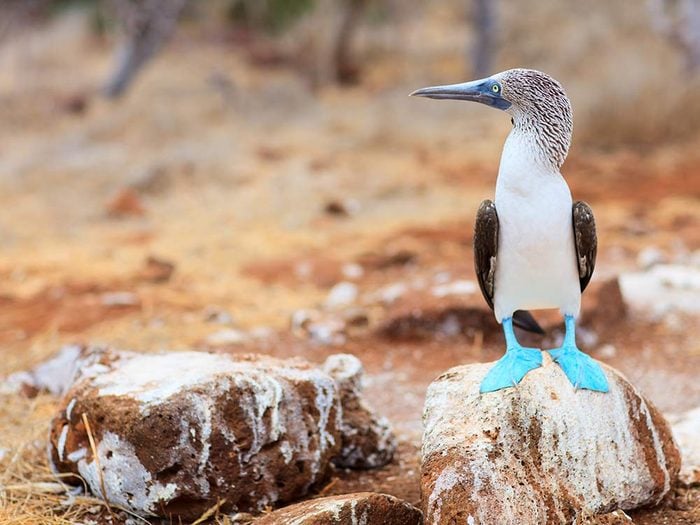
1. Galapagos Islands, Ecuador
Probably the most famous of the planet’s animal menageries, these islands 600 miles off the coast of Ecuador have been sheltered from interaction with the outside world for so long that they’ve developed into a treasure trove of unique species: penguins, swimming vegetarian iguana, giant tortoises and more. And the scarcity of human history here has made them all less wary of the two-legged, upright visitors. A zoom lens is typically not necessary—you’ll be stepping back to take some shots.
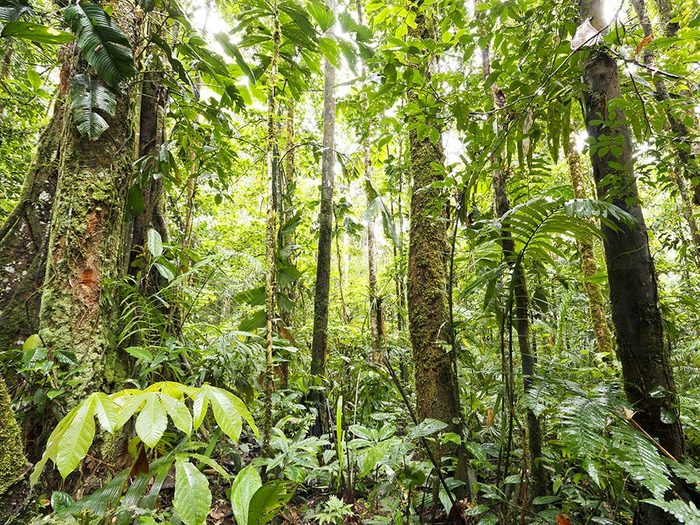
2. The Amazon Basin
Only 40 per cent of the area drained by the mighty Amazon River is in Brazil. So extensive are these forests and tributaries that you can visit them in several other countries, including Peru, Bolivia, Columbia, and Venezuela. The Napo River in Ecuador is but one of many places to find eco-lodges that put travellers in the jungles and along the waterways to see the vibrant local floral and fauna. Sacha Lodge, for example, offers a walkway above the canopy, jungle mud-and-boardwalk paths and a secluded lagoon just a short hike from the Napo.
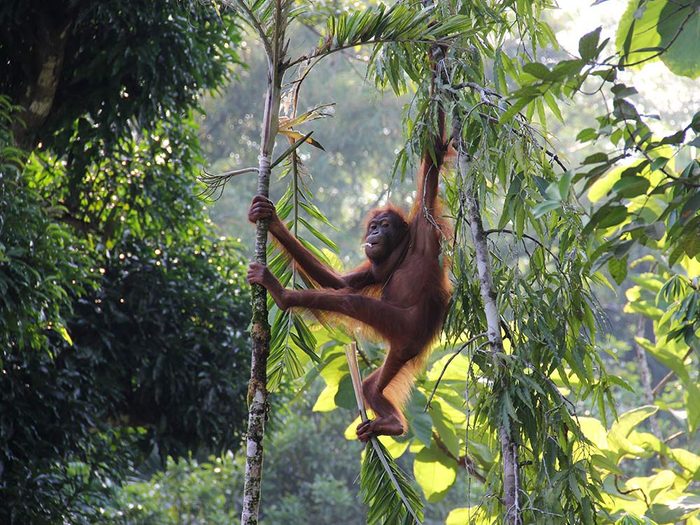
3. Borneo
The world’s third largest island, Borneo is part of the Malay Peninsula and is divided between Malaysia, Indonesia and tiny Brunei. It’s home to Asian elephants and Sumatran rhinoceros and sadly, one of the last natural homes to the endangered orangutans. Don’t bother trying to count how many species are here: the list grows every year as new ones are discovered. The bird species alone top 400. Head to the Malaysian state of Sabah at the north end where you can climb Mount Kinabalu, snorkel the surrounding seas or watch sea turtles lay their eggs on nearby Selingan Island.
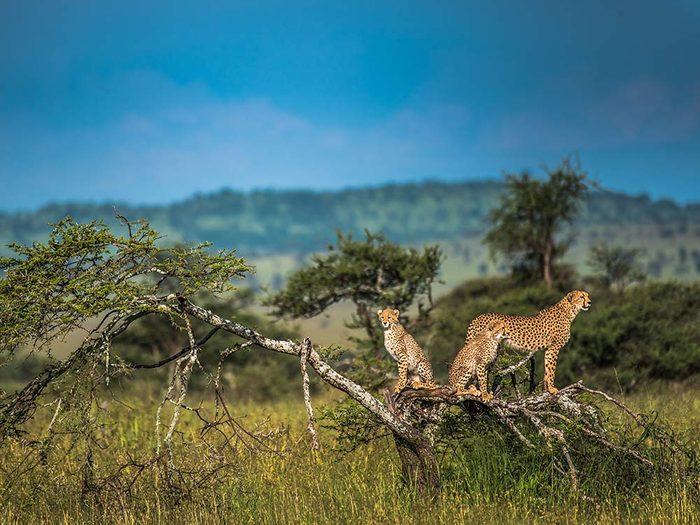
4. Serengeti, Tanzania
More than just “endless plains” (which is what its name means in the language of the Maasai), the Serengeti also holds rich forest and swampland, and is home to a number of national parks and preserves in Tanzania. This is the place for the safari of a lifetime. Along with the massive herds of wildebeest (2 million), gazelle (half million), and zebra (quarter million), there are the predators: lions, leopards, cheetahs and crocodiles. Add the elephants and giraffes and the Serengeti is really a surreal dream for anyone who’s never ventured beyond their local zoo.
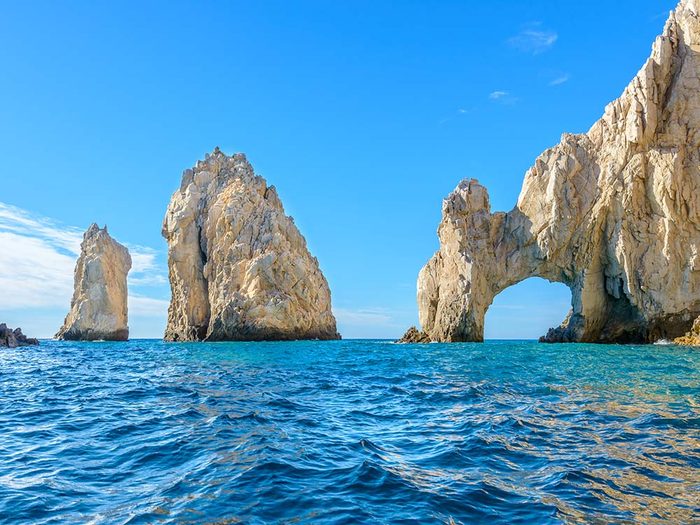
5. Sea of Cortez, Mexico
Set between the long narrow peninsular Baja California and the Mexican mainland, this nutrient-rich sea attracts a wide variety of marine life. Designated a World Heritage Site, the Sea of Cortez attracts whale sharks, dolphins, manta rays, ten species of whales, sea turtles, colonies of sea lions, and a variety of shorebirds. Join a whale watching tour or paddle yourself in a kayak to get close to them. Snorkel with whale sharks or see the largest creature on earth: the blue whale.
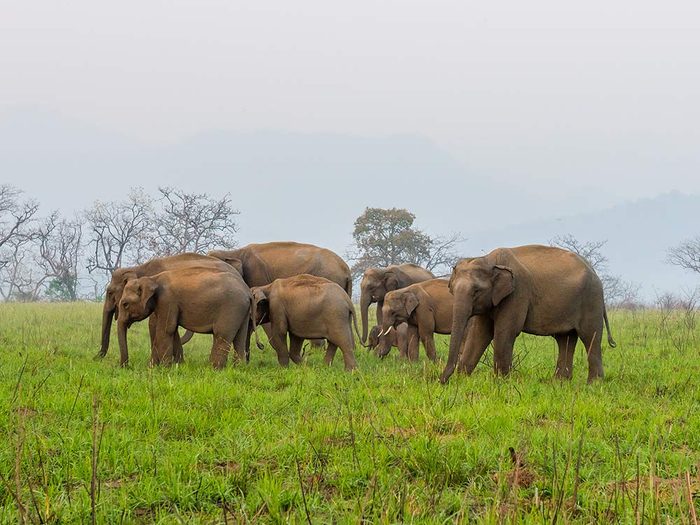
6. Jim Corbett National Park, India
Tigers are in grave danger of extinction in the wild and there aren’t many places you are able to see them. Corbett National Park at the foothills of the Himalayas is one of your best bets. Visitors can stay overnight in the park, and with a good guide, have a decent chance of spotting this amazing animal. Also in the park are herds of elephants, crocodiles, sloth bears, over 600 species of birds, and leopards if you’re lucky.
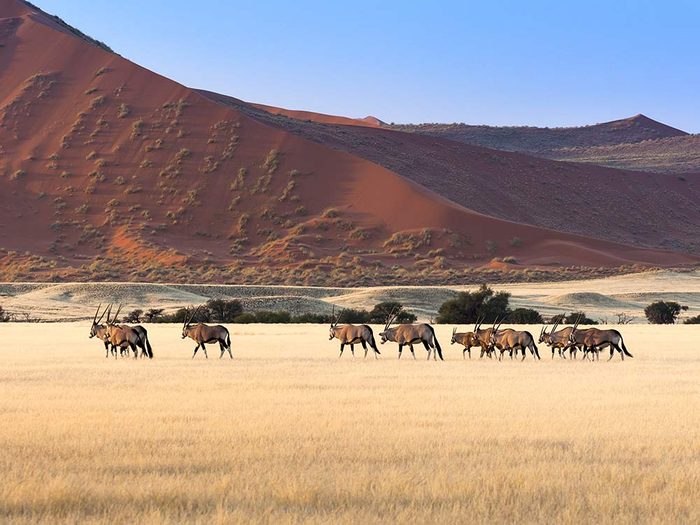
7. Namibia
Rhinoceros, both black and white, have been decimated over the years by poachers, but Namibia has provided some sanctuary for them. Etosha National Park is the country’s most impressive wildlife reserve. You can see lions, giraffes, elephants, and rhinos, plus the occasional cheetah or leopard. A quarter of the park is a dried up salt pan which was once a lake and is only briefly filled with water each year during rains. It is part of the Kalahari basin. Alternatively, visit Cape Cross on the Skeleton Coast to see a colony of over 200,000 Cape fur seals, which can only be found on this southern coast of Africa.
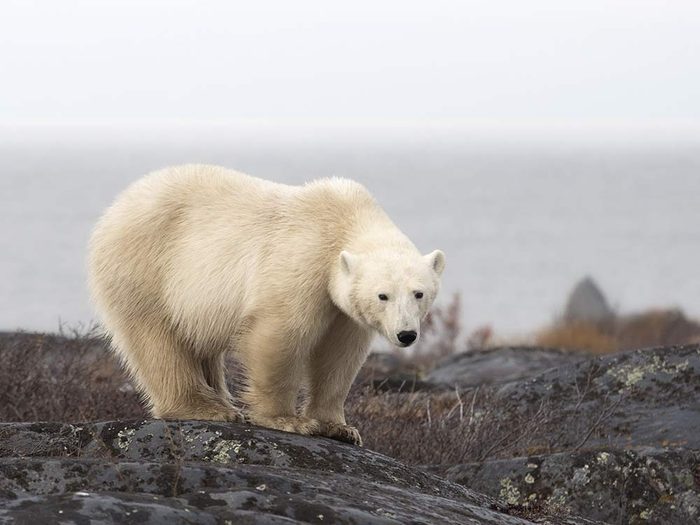
8. Churchill, Manitoba
Tucked in among parks and preserves up along the western shores of Hudson Bay, Churchill is not just a great place to see Beluga whales—you can actually snorkel with them. And if you have a bit of the polar bear in you to do so, then you should definitely go on a tour to see the mighty white beasts themselves. These may be the two big stars of the show, but the Churchill landscape includes wet and dry tundra, boreal forest, wetlands, creeks, estuaries, and coastline drawing over 250 species of birds. Life-listers will hope to spot the rare Ross’ Gull.
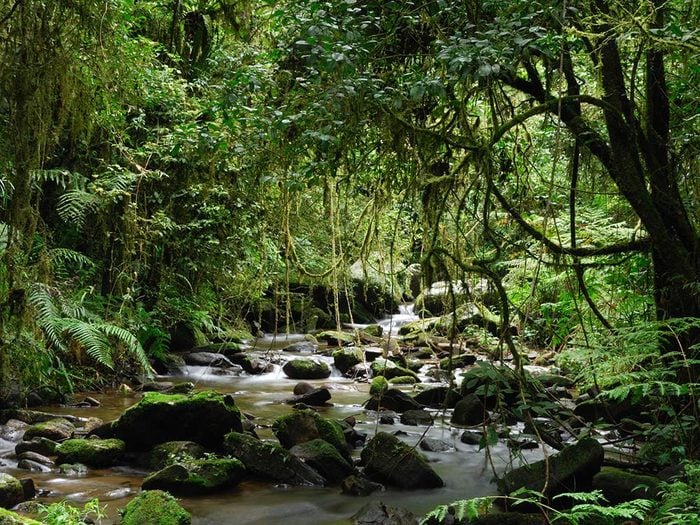
9. Rainforests of the Atsinanana, Madagascar
Six national parks in Madagascar comprise this World Heritage Site on the east side of the island. Much like the Galapagos Islands, Madagascar is home to a diverse and rich ecosystem that evolved in isolation since the island’s separation from the mainland over 60 million years ago. Most notable are the primate species, which are more numerous here than almost anywhere in the world. In each of the parks you can see as many as ten different types of lemur. Tour lowland rainforest and climb the slopes to cloud forest. You’ll even see humpback whales along the shore.
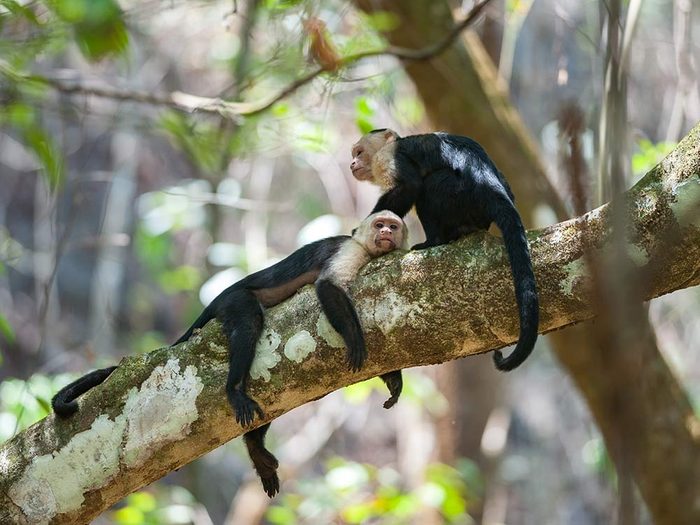
10. Corcovado National Park, Costa Rica
Situated on the Osa Peninsula on Costa Rica’s Pacific coastline, this national park is home to old-growth wet forests, cloud forests, and mangrove swamps. Visitors can camp independently or go on guided tours. Costa Rica is known as an eco-destination and this park lives up to the reputation with all four species of native monkeys, more than 100 kinds of butterflies, over 400 species of birds (16 hummingbirds and an abundance of the dazzling scarlet macaws), and four of the seven species of sea turtles in the world come to the park’s beaches to lay their eggs.